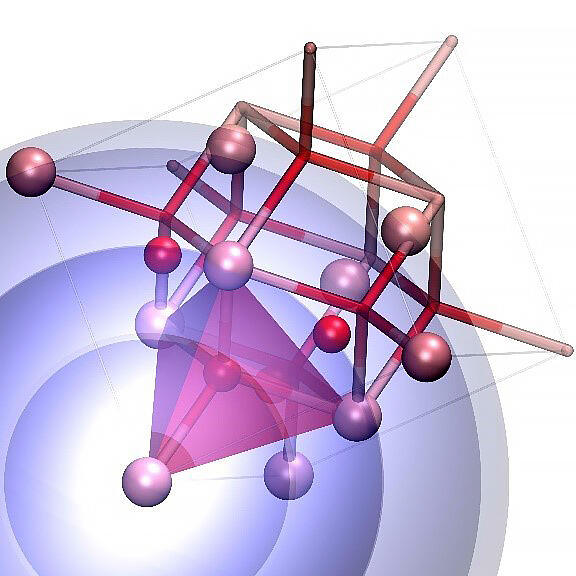A collaborative research group including specially appointed Assistant Professor Hiroyuki Kumazoe, Professor Ichiro Akai, and other researchers of the Kumamoto University Institute of Industrial Nanomaterials applied a new analysis method, which combines sparse modeling that uses basis functions based on electron wave multiple scattering theory and Bayesian inference, to the extended X-ray absorption fine structure (EXAFS) spectrum of yttrium hydroxide (YHO) thin film. As a result, it became clear that the oxygen atoms existing around the yttrium of the YHO thin film are in a tetrahedral configuration, and considering Bayesian inference, the research group successfully modeled measurement noise and analyzed the microstructure based on the noisy data despite the inherent difficulty.

Provided by Kumamoto University
EXAFS based on synchrotron radiation is a powerful measurement method for advanced device functions; however, EXAFS analysis is difficult when the amount of X-ray absorption is small in thin-film devices. Therefore, the research group used a machine learning method, which combines sparse modeling and Bayesian inference, to clarify the microstructure of YOxHy thin-film crystals with photochromic properties from EXAFS signals with a strict signal-to-noise ratio. First, the sparse modeling of extended x-ray absorption fine structure (EXAFS) data was performed using a basis function based on the two-body multiple scattering theory of photoelectron waves generated by the complex Hedin-Lundqvist potential (potential described by complex numbers that represent the scattering and absorption of incident particles. The real part represents the scattering of incident particles, and the imaginary part represents absorption).
Based on the analysis results, the research group developed a method to estimate the noise superimposed on the data using optimization to reduce the Bayesian free energy and obtain a radial distribution function that is easy to interpret. This method was applied to the EXAFS analysis of the yttrium hydride epitaxial thin film, which is assumed to be an optical switch material, to demonstrate its effectiveness. As a result, it was suggested that the yttrium and oxygen atoms were discriminated, and the radial distribution function of each atom was estimated at the correct interatomic distance, which implied that the oxygen atom was tetrahedrally coordinated around the yttrium atom. This method does not require information on the crystal structure in advance, can be analyzed with information on the element species, and is based on the two-body multiple scattering theory. Therefore, it is possible to estimate the interatomic distance. The method possesses the characteristic of high noise immunity based on the framework of Bayesian inference.
According to Professor Akai, "This new analysis method allows us to identify elemental species and analyze long-range structures with the correct interatomic distance with high noise immunity. It is possible to analyze weak EXAFS signals, which was not possible with the conventional method, and it is expected that it will become the standard for microstructure clarification methods for various materials in the future."
■ Sparse modeling: It is a method to extract the main factors included in the data according to appropriate norms based on the assumption that the number of factors that explains the phenomenon is small (sparse). The whole picture can be captured based on a small amount of information, and it is used in various fields.
■ Bayesian inference: It is one of the estimation methods based on Bayesian statistics, which estimate the cause based on the results. In data analysis, a measurement data model is developed and applied, and parameter estimation is performed to obtain the model parameters. The procedure to determine the probability distribution that the parameters follow is known as Bayesian inference, assuming that measured data and parameters are randomly obtained (random variables). As the probability distribution of the parameter can be obtained in addition to the parameter value, the uncertainty of the parameter value can be quantified.
This article has been translated by JST with permission from The Science News Ltd.(https://sci-news.co.jp/). Unauthorized reproduction of the article and photographs is prohibited.




